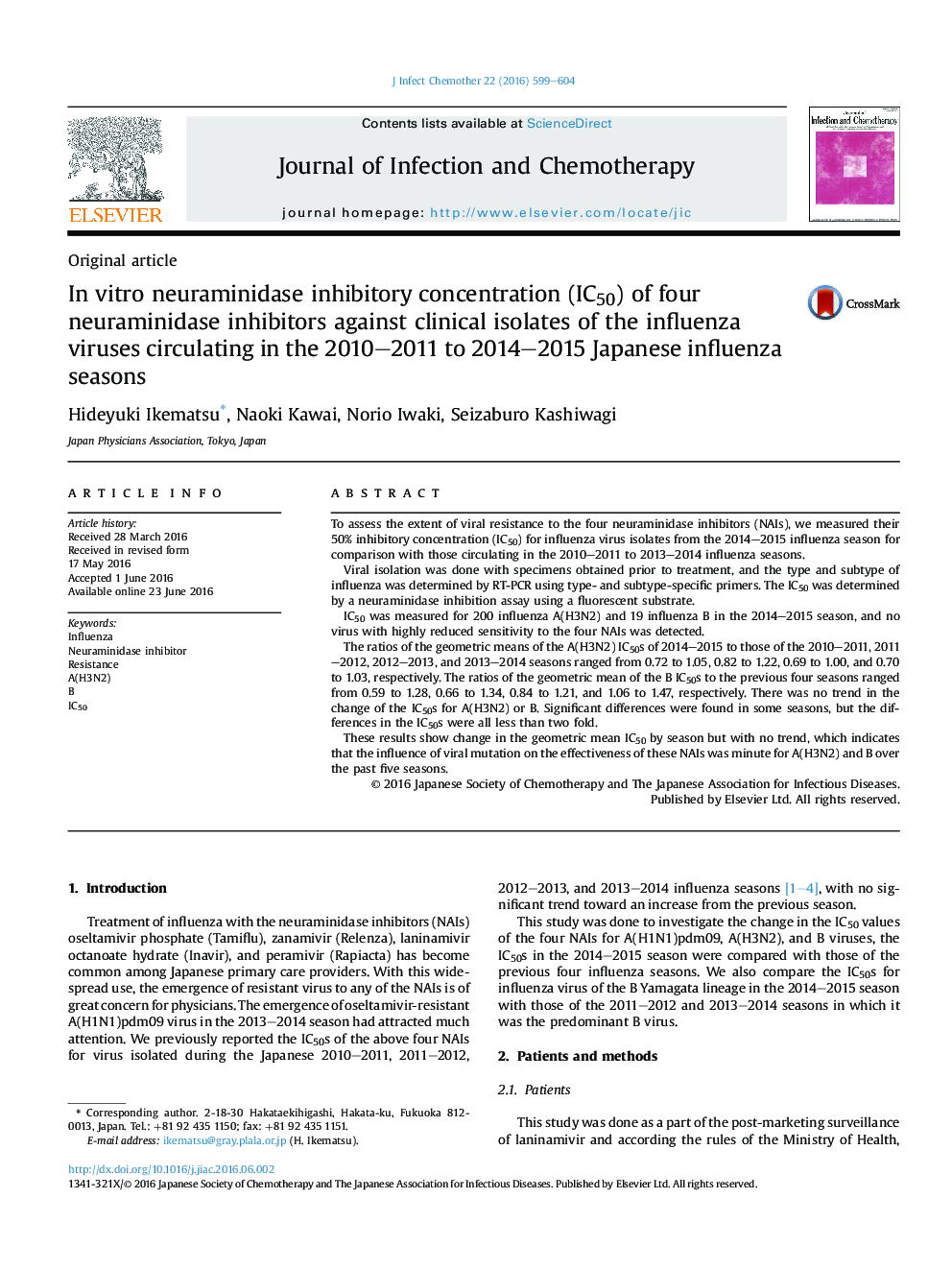| Article ID | Journal | Published Year | Pages | File Type |
|---|---|---|---|---|
| 3376653 | Journal of Infection and Chemotherapy | 2016 | 6 Pages |
To assess the extent of viral resistance to the four neuraminidase inhibitors (NAIs), we measured their 50% inhibitory concentration (IC50) for influenza virus isolates from the 2014–2015 influenza season for comparison with those circulating in the 2010–2011 to 2013–2014 influenza seasons.Viral isolation was done with specimens obtained prior to treatment, and the type and subtype of influenza was determined by RT-PCR using type- and subtype-specific primers. The IC50 was determined by a neuraminidase inhibition assay using a fluorescent substrate.IC50 was measured for 200 influenza A(H3N2) and 19 influenza B in the 2014–2015 season, and no virus with highly reduced sensitivity to the four NAIs was detected.The ratios of the geometric means of the A(H3N2) IC50s of 2014–2015 to those of the 2010–2011, 2011–2012, 2012–2013, and 2013–2014 seasons ranged from 0.72 to 1.05, 0.82 to 1.22, 0.69 to 1.00, and 0.70 to 1.03, respectively. The ratios of the geometric mean of the B IC50s to the previous four seasons ranged from 0.59 to 1.28, 0.66 to 1.34, 0.84 to 1.21, and 1.06 to 1.47, respectively. There was no trend in the change of the IC50s for A(H3N2) or B. Significant differences were found in some seasons, but the differences in the IC50s were all less than two fold.These results show change in the geometric mean IC50 by season but with no trend, which indicates that the influence of viral mutation on the effectiveness of these NAIs was minute for A(H3N2) and B over the past five seasons.
